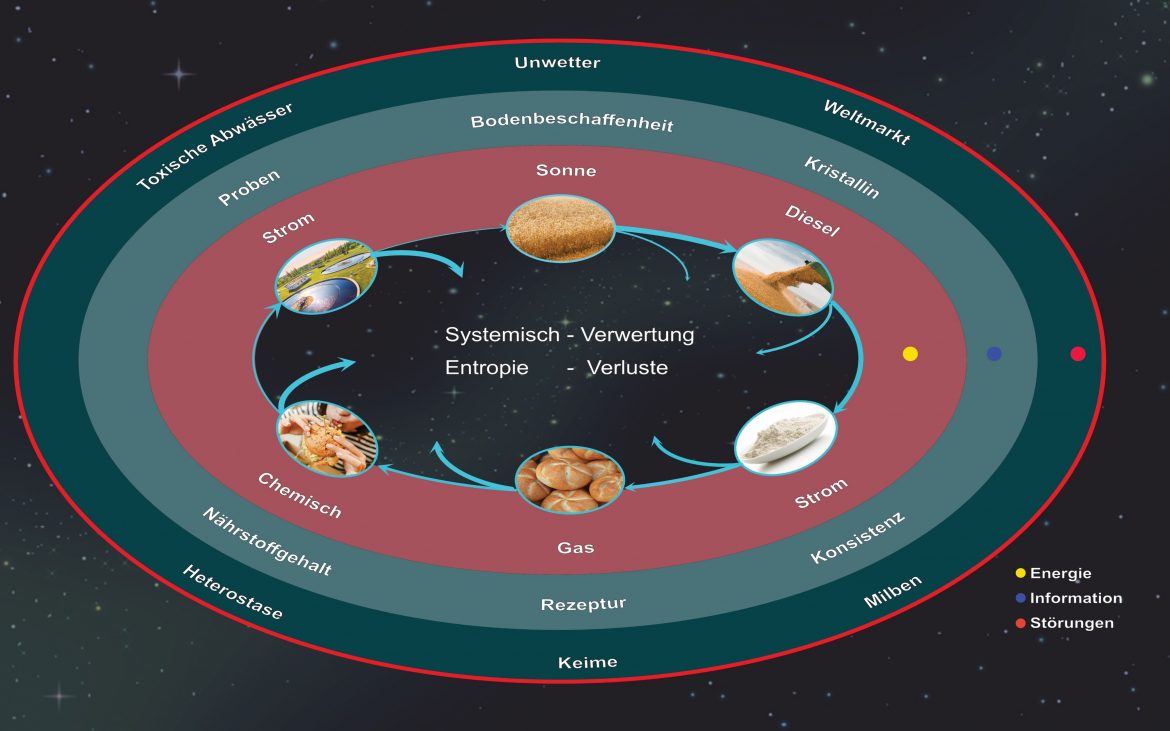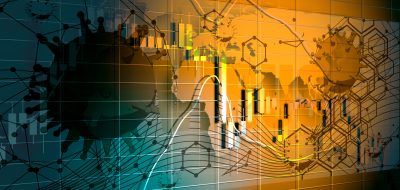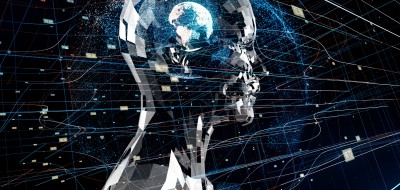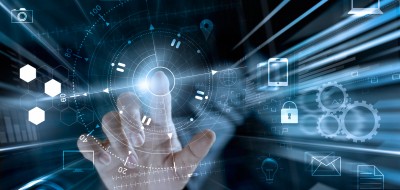The lock down, at least in its acute phase, restricted personal freedom and thus changed life. Mouthguards, keeping a distance and quarantine were uncomfortable. The probability of getting the virus was still low. In the decaying phase it was extremely difficult to meet an infected person.
Nevertheless, the media continue to speak of an epochal social and political change. It will probably not be as sustainable as forecast. People quickly forget and the convenience of a consumer society will return. Even if it doesn’t go as quickly as the economy desires.
In addition, the COVID SARS 2 is far from the most dangerous pandemic in history. The Spanish flu probably claimed 100 million lives in 1918-20. At that time the death rate was 5%. In the case of the plague, it was 50% of those affected. At the moment, 450,000 people have died of corona worldwide. The mortality rate is very different internationally and regionally. In the USA there are 360 pmio inhabitants, in the UK 630 pmio and in China only 3 pmio. The danger of the disease depends on exogenous factors rather than on the pathogen itself. If you only look at the data, China is one of the safest countries. Living in the UK is not so desirable.
A society’s resilience to a pandemic depends, among other factors, on the culture of hygiene, the health system, population density, knowledge of viruses and, last but not least, the leadership of those responsible for politics.
The more stable a society in “peacetime” the less damage in pandemic times – that could be a hypothesis. The situation in highly developed countries such as Italy, England and Sweden speaks against this. But not everything has collapsed there either. The basic supply of electricity, food and information to the residents was always ensured. Obviously, their stability is significantly better than that of health systems. In countries with good health care, such as Austria, there has been far from a collapse in medical care.
The stability of the health system also follows market economy rules of supply and demand. Conversely, however, insofar as demand has to be dampened. Generally speaking, a stable system requires resources (money), knowledge (IT) and order (networking). Systems developed in this way are very robust. But because they are complex, they are also prone to failure. It is therefore not enough to control a medical system in normal operation, but especially when there are faults. Yes – the Corona Virus is such a disorder.
A disruption to health systems, airlines, the oil industry, etc. but not to food supplies. What can be shown in the “Daily Bread” is at the same time an explanation for the concept of “negative entropy”. From this, in turn, the deficiencies in the current health system can be derived.
Entropy is a phenomenon from the basic physical laws of thermodynamics, more precisely its second law. As a result, closed systems always strive for an energetic minimum, so they become colder and their order disintegrates. Café is getting colder and not warmer, houses are decaying, living things are getting older, dying and decaying. This is the highest form of entropy of living things. “You are made of dust and will turn to dust again” have already recognized the authors of the “Old Testament”. Now the opposite of entropy is order or just “negative entropy”.
To maintain order, energy, information and the keeping away from disturbances are constantly needed. Diseases are such disorders and can be dampened by treatments (energy supply) with the right methods (knowledge) and to the exclusion of disorders (hospital germs).
You experience a sublime impression of order on a hike along a grain field. The seeds were applied mechanically and to the centimeter. So now the stalks are lined up. The ears all tilted in one direction and swinging gently in the wind. Possibly still golden yellow in the evening sun. A moment that we can capture with a camera. The reality, we know, is different. The next day, the harvest can be completely destroyed by bad weather. A cornfield destroyed by hail resembles the ruins of a city after a bombing raid. Destruction creates disgust, whereas order and symmetry stand for aesthetics.
What if the farmer does nothing? There have also been cases like this. The collectivization of agriculture in communist systems has led to years of such outages and thus famines. There is less of this in market economy systems because the grain field is not isolated, but part of a larger one (see Figure 1). The farmer receives his reward and strives to ensure the greatest possible order. He will use resistant, transgenic plants, fertilize depending on the nature of the soil, destroy pests and align the harvest according to the weather forecast.

The now ripe grain is ready for harvest. Using a combine harvester, one ton of grains is produced within five minutes. This is possible because it provides many times the human energy in the form of diesel and the apparatus used can do just that. Everything that a combine needs in terms of intelligence is built into it, so it is crystalline. Medical devices are constructed according to the same principle. A respirator also has such crystalline information. Newer machines also have a fluid part in the form of artificial intelligence and can adapt to the needs within limits. Of course, many disturbances can occur in the grain industry. The volatility of the world market price as an example can destroy an entire crop. As has already happened in the United States, it is cheaper for farmers to burn down a grain field than to harvest it. If everything goes well, as the rule says, then you have cereal grains in a silo without any contamination – in other words, the highest order. Taking out a handful and sliding the grains through your fingers is aesthetic and also triggers a little awe.
The further processing to flour follows the same principle. Machines (mills) are supplied with energy (electricity) and, if possible, kept free of disturbances (mites). With today’s technology, every grain is photographed before grinding (information) and, if defective, shot out with a compressed air nozzle before grinding. However, not all components of a grain are processed into flour. Depending on the degree of grinding, there is a remaining amount of grain meal. This could be disposed of or be sent to another system. For example, as a starch for the production of bioplastics. It is precisely this recycling of waste that we often fail to recognize in the next step.
Worldwide, a third of the food ends up in the rubbish and experiences entropy there. A nice word, but it is nothing more than rotten. A lot of energy was put into it. From the sun to diesel, gas, electricity and human resources. Is it all 33% lost in a garbage dump? Does not have to be when organic waste is separated and fed to the fertilizer production. Such systems are far from standard worldwide. Because there are still deficient regions, the food distribution worldwide is not balanced. As well as in the USA intensive care beds (for privately insured) are empty while there is a great shortage (for non-insured). Keeping supplies is also a waste of energy if it is not used.
So – now is the “daily bread at the table”. Where there is an abundance of food there is a risk of overeating. Associated with it the lifestyle disease of obesity. The body loses its homeostasis and becomes disordered. Information about a balanced, calorie-conscious diet can counteract this. Provided there is awareness of this and people can discipline themselves.
The cycle closes when waste and excretions reach a sewage treatment plant and are reprocessed there. Like all other components in the present cycle, such a system also requires energy, information and must be able to be operated without problems. A special feature is the energy supply. During the cleaning process, gases are generated that are burned in engines and used to generate electricity and thus for self-sufficiency. A sewage treatment plant runs almost automatically in connection with IT. The non-toxic part of the sewage sludge comes back to the grain field. The rest are burned.
I have certainly neglected some variables in this modeled system of cereals and bread. However, if a process can be broken down into stable components and networked with one another and with external processes, a low entropy system can be developed. Another requirement is that they must be viable and adaptive independently without central control. The individual components should have the necessary properties. This also includes the intrinsic motivation to develop according to the external circumstances. An evolutionary-based reward system is required to guarantee survivability. It definitely doesn’t need the goal of maximizing profits.
Based on these findings, considerations can now be made for a crisis-proof healthcare system. These include:
- Networking and redundancy: Development of decentralized, networked healthcare facilities with the necessary redundancies. If a unit is closed due to infection, other houses must be able to perform its task without loss. Information synchronization is urgently required. The electronic health record for every citizen is therefore mandatory.
- Energy: A fail-safe, off-grid power supply is only the technical part. Energy also means being able to retain qualified workers to the required extent. In capitalist systems, energy can be reduced to the common denominator of money. Too little energy supply means entropy and leads to decay. The years of savings in the English healthcare system are a tragic example of this. The proverbial “saved to death”. Every healthcare facility is asked to take care of itself in this regard. Even if the money comes from the state or Caritas. It definitely has to be! Own income arises from the sale of services to society. That in turn has to be of some value to us.
- Resources: Their availability is closely related to money. Accordingly, such an accumulation could lead to energy losses. Bulky storage of masks that will not be used for years is a waste. If these are only used in years, they no longer correspond to the state of the art. A system must be able to provide “on demand” production. Comes cheaper than storing them.
- Losses: Every private company is afraid of this and has used managers to avoid it. If there are already losses, they should not simply be accepted, but possibly recycled in another system. Investments in ventilators that are no longer needed after the epidemic should be written off or better sold to countries that currently need them. Machines are crystalline intelligence in which energy is bound. Since epidemics do not occur so often, knowledge and skills are also something that can become obsolete and lost. Experience is very much in demand in an acute situation. International cooperation is essential to build this up. There is always an epidemic-like situation somewhere. Even if it is “only” locust swarms “or radioactive accidents. MSF is an excellent approach for this. Exporting equipment and knowledge to other systems has a very high “return”
- information: This is exactly what has worked well for Covid 19 . We were informed about the new number of cases and their localization almost every hour. Unfortunately, it is still difficult to get information about infected people before the disease has broken out. Samples from sewage treatment plants are at least indicators and should be made available in even more granular form. Distributed sensors in the sewage system could serve as early warning systems. Tracing via smartphones is also a good option for data acquisition, but is problematic due to data protection. APPS that are efficient and comply with data protection must first be developed. Here you can put hopes in Apple. A company that with places its SmartPhones high priority on e-health. If dogs can sniff COVID, electronic sensors could also be built into the SmartWatch . In my opinion, this is the greatest lever for combating pandemics. Seven billion wristwatches are not noticed and do not stigmatize. Pandemics could also be controlled if one knows their origin precisely and in advance. Now pattern recognition is one of the strengths of artificial intelligence. In any case, the global data from the current situation should be used as training data for specific pandemic AI.have to provide the relevant data – which is difficult with China alone.
- Disruptions: Yes – Nation statesCovid 19 was a disruption. If the global health system had worked, there would have been no real disruption, the slump in the global economy. And it certainly wasn’t the last time. However, it would be too short now to “tune” the health system to treat pandemics. Next time it’s a radioactive accident, a Europe-wide blackout, swarms of insects, toxic food and much more. The health systems of the future should be able to adapt immediately to the respective requirements. So should be low entropy systems. It is therefore necessary to learn from the food industry model outlined above. “How do the farmers do it?”
In summary, it can be said that a stable system requires enough energy and information. The more information, the lower the energy expenditure. Produces as little loss and waste as possible and acts as an adaptive, self-renewing, networked being. A challenge for the 21st century and for all critical systems.
Literature:
| Steven Pinker 2018 Enlightenment now: For reason, science, humanism and progress | |
| Ajay Agrawal, Joshua Gans 2018 Prediction Machines: The Simple Economics of Artificial Intelligence |
Manfred Litzlbauer




 Deutsch
Deutsch English
English